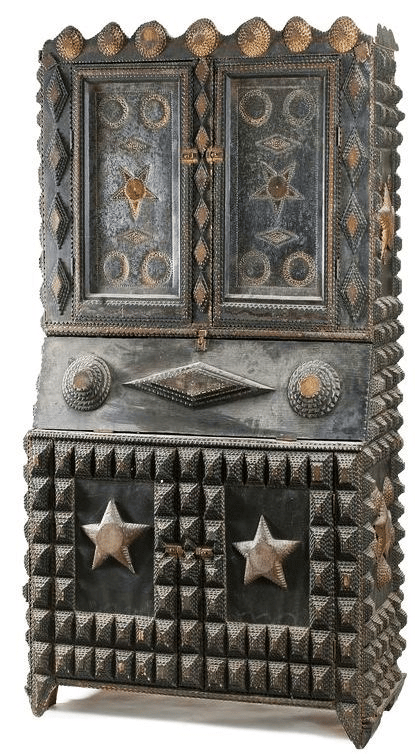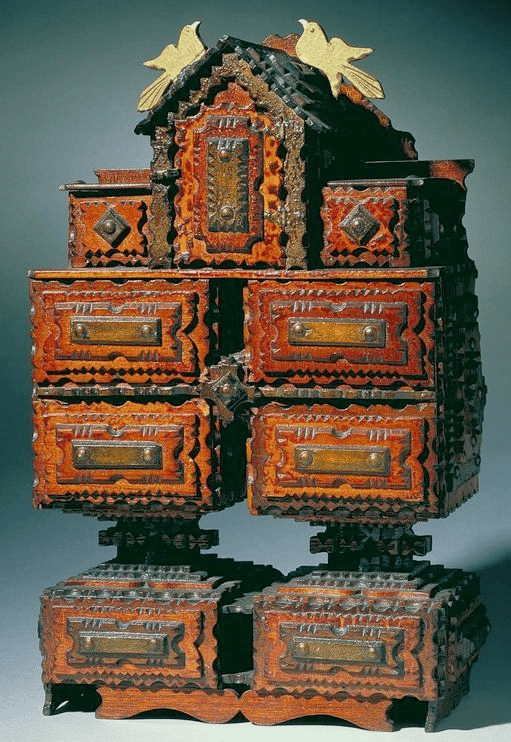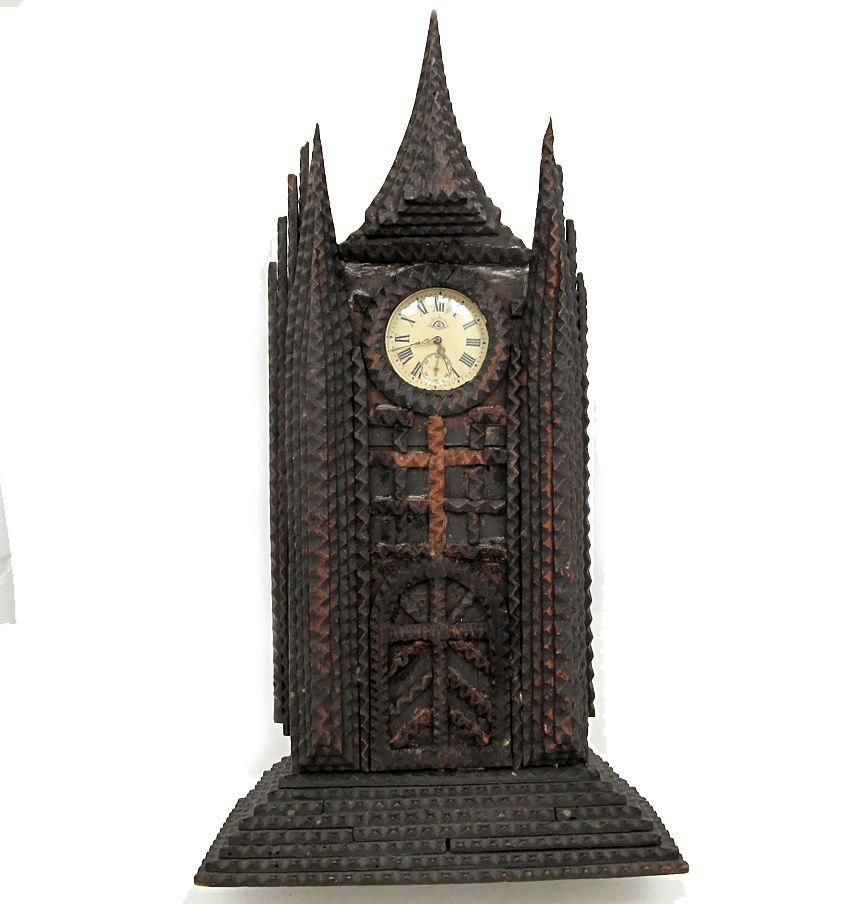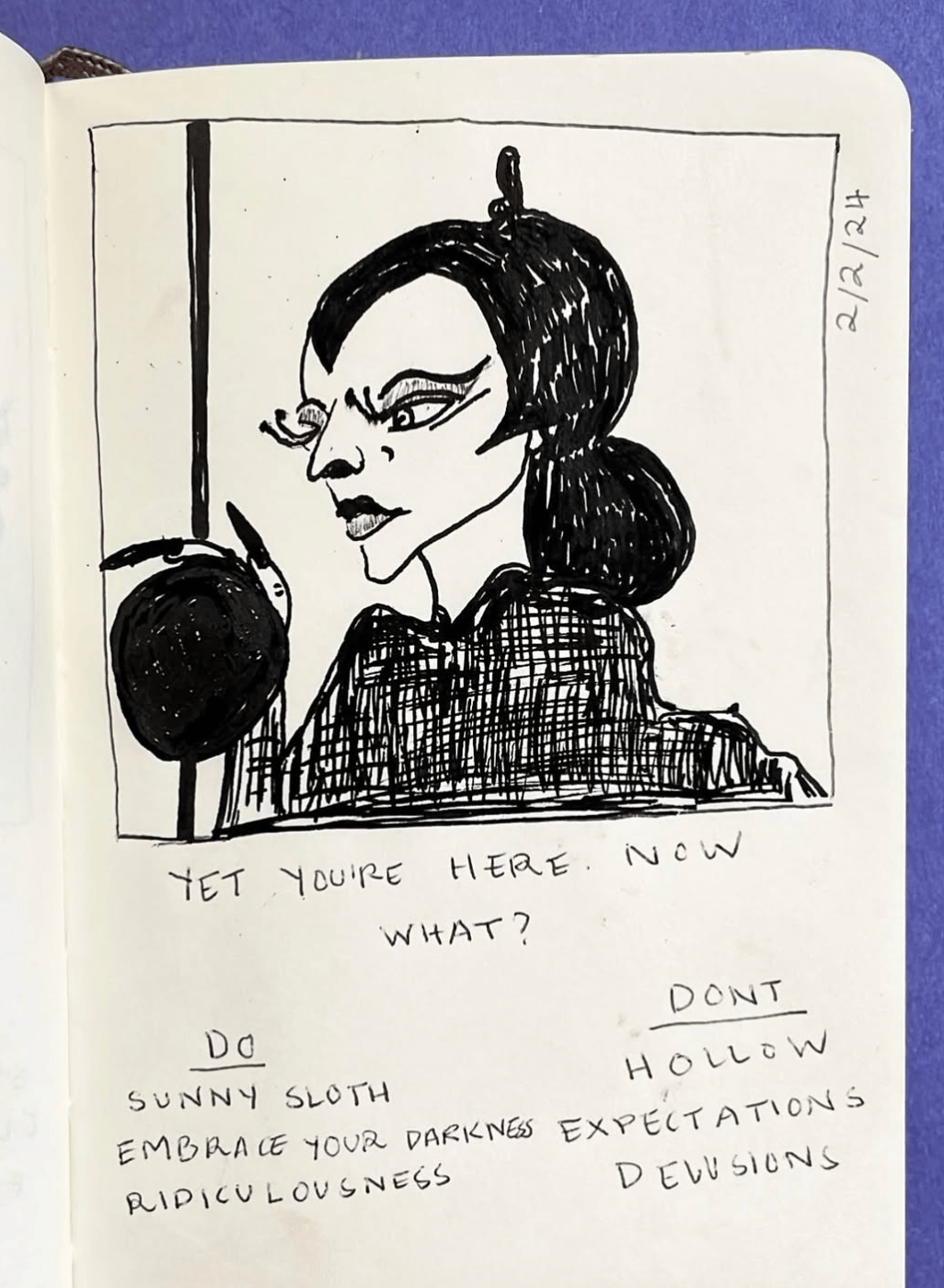- WAS [the newsletter]
- Posts
- WAS THE NEWSLETTER #98
WAS THE NEWSLETTER #98
DESIGN CASE STUDY: TRAMP ART

#98
I’m Paige Wassel. WAS the Newsletter is your weekly dose of design inspiration, where we no longer throw around the T-word.
WAIT, WTF IS TRAMP ART?
You know how everyone’s out here screaming about “upcycling” like they invented it? Spoiler alert: they didn’t. Turns out people have been DIY-ing for, like… ever. That’s why we’re doing a design case study on tramp art today.
The name comes from the idea that itinerant workers (think “Dust Bowl”) crafted decorative objects out of discarded wood in the early 1900s. Tramp art wasn’t necessarily made by people riding the rails in patched overalls, eating beans straight from the can, though that’s some romanticized imagery. Instead, this was a working-class craft that stemmed from the confluence of necessity and boredom.

Because what do you do if you don’t have it and can’t buy it? You make it. I feel this.
Tramp art encompasses a wide range of end results, from picture frames to boxes to full-scale furniture, all intricately layered with obsessive little notches and carved edges. I find it fascinating because every time I see a piece, it makes me wonder if the maker was a genius or just high AF. (Tramp art feels sorta Silverlake-coded.)
The Medium Is the Message
These artists used whatever scrap wood they could find. Most often, they grabbed discarded cigar boxes, orange crates, and shipping materials. Their method was carving and “chip notching,” meaning slicing endless little pieces and layering them… likely until the Depression ended.
The artists created anything from picture frames to clocks to cabinets. The pieces are rough, but also symmetrical and architectural. They’re the kind of thing you might stumble across at an antique shop, and you’re torn over whether it’s ugly or brilliant. Both can be true at the same time.
  |  |
The Philosophy
At its core, tramp art is surprisingly modern because it’s about making something out of nothing. A hundred years before #sustainability became an Instagram post, these people were turning trash into treasure because they didn’t have a lot of other choices. Waste not, want not. Between the arts and the crafts, it feels kind of punk rock to me.

The Lewk
I’m talking layers on layers on layers. Each piece has this step-pyramid thing happening, like a Mayan temple in miniature. The design is geometric and eye-catching. Tramp art is the antithesis of “clean lines” modernism, and that is okay. We love a conversation piece.
The Cultural Context
We don’t know if actual “tramps” made the majority of tramp art. (Also, pretty sure that’s not a word we use anymore.) But here’s what’s iconic: tramp art was democratized design before democratized design was a thing. No one needed a degree from RISD to create—they just required too much time on their hands and a sharp whittling knife to make what is now a tangible link to history.
The Use of Tramp Art in Spaces
Picture an airy, spare, contemporary room, with a jagged, layered tramp art mirror smack in the middle. It looks like something your paw-paw made in a shed after hitting the ‘shine, but in the very best way. That contrast is what makes it interesting, especially given how tactile these pieces are. These pieces want you to touch them. They’re maximalist before maximalism got branded as a lifestyle.
 |  |
The Reason Tramp Art Matters Now
To me, tramp art feels honest. It’s raw and imperfect and definitely has a POV. Also, let’s be real: with climate change breathing down our necks, crafting furniture out of castoffs makes sense. Art or landfill? I choose art.

Collectors are finally onto it, natch. Prices have gone from $5 at a yard sale to four figures at an auction house. But the soul of tramp art, which is turning scraps into beauty, still feels weirdly relevant.
AMA ON DESIGN
So our hundredth newsletter is about to come out. Whoa. In celebration, I’m inviting you guys to ask me anything. Let’s not make it weird. IDK if an ape or a hundred unarmed men would win a fight against each other. My wheelhouse is more about lighting, wallpaper, fabric, etc. So if you have a question on design, on creativity, or on process, hit the link and I’ll compile a list of answers for our big centennial edition! I guess you can ask a few personal questions too………

xx,
P